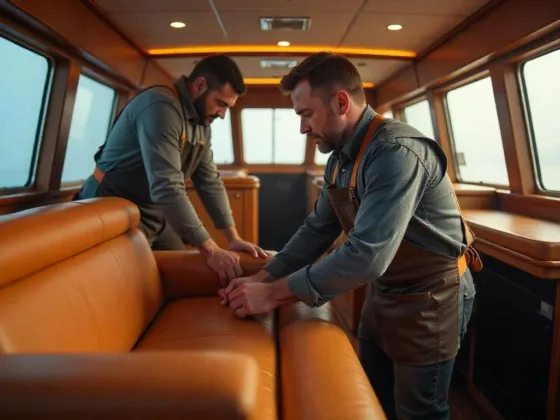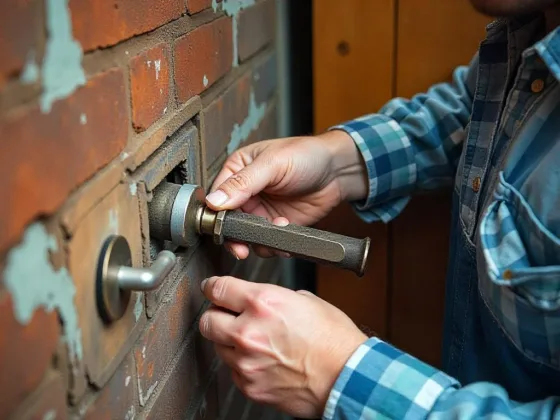Table of Contents Show
Concrete is a durable and versatile material used in a wide range of construction projects, from building foundations to sidewalks and bridges. However, like any other material, concrete requires regular maintenance to ensure it remains strong and resilient over the years.
Without proper care, concrete can crack, break down or become vulnerable to moisture damage. Therefore, it’s essential to follow specific tips and best practices when maintaining concrete structures.
In this article, we will explore some of the top tips and best practices for maintaining concrete surfaces. Whether you’re a homeowner looking to keep your driveway in good condition or a concrete contractor responsible for large-scale projects like bridges or dams, these insights will help you protect your investment and ensure that your concrete structures stand the test of time.
Why Maintaining Concrete Is Important
Maintaining concrete is important for several reasons. Firstly, concrete is a durable material that can last for decades with proper maintenance. Regular upkeep of concrete surfaces such as driveways, sidewalks, and parking lots can help prevent cracks and potholes from forming, which could otherwise lead to costly repairs down the line.
Additionally, maintaining concrete surfaces helps to ensure the safety of pedestrians and vehicles. Cracks and uneven surfaces can pose tripping hazards for people walking on sidewalks or entering buildings.
Potholes in parking lots can damage cars and cause accidents. Finally, regular maintenance of concrete can improve the appearance of a property. Clean and well-maintained concrete surfaces create a positive impression on visitors or customers.
This is especially important for commercial properties where curb appeal plays a significant role in attracting business. Overall, maintaining concrete not only saves money but also increases safety and improves the overall look of a property.
Read Also:
Cleaning: Removing Stains and Debris
When it comes to cleaning concrete, removing stains and debris is an important part of the process. Concrete is a porous material that can absorb liquids and become stained if not properly maintained.
The most common types of stains on concrete are oil, grease, and rust. To remove these stains, use a degreaser or rust remover specifically designed for use on concrete surfaces.
In addition to stains, debris such as dirt and leaves can accumulate on concrete surfaces over time. This not only looks unsightly but can also create slip hazards. Regular sweeping or blowing away debris from the surface of your concrete will help prevent buildup and keep your outdoor areas safe.
Sealing: Protecting Against Damage
One of the most important steps in maintaining concrete surfaces is sealing them. Sealing surfaces like driveways, sidewalks, and patios can protect against damage from weather, chemicals, and regular wear and tear.
By creating a barrier between the surface and potential harm, sealants can help extend the life of your concrete.
There are several types of sealers available for use on concrete surfaces. Some penetrate deep into the pores of the surface while others create a film on top. The type you choose will depend on factors such as climate conditions, desired appearance, and level of protection needed.
It’s important to note that not all sealers are created equal. When selecting a sealer for your concrete surface, be sure to research its effectiveness in protecting against specific types of damage.
Preventative Measures: Avoiding Future Issues
One of the most important aspects of maintaining concrete is taking preventative measures to avoid future issues. This can include regular cleaning, sealing, and addressing any cracks or damage as soon as they appear.
Regular cleaning can prevent dirt and debris from building up on the surface, which can lead to discoloration and even mold growth over time.
Sealing concrete is also an important preventative measure that helps protect it from water damage and staining. Whether you’re looking to construct a new building or renovate an existing one, our comprehensive guide on Seattle concrete contractors has got you covered.
It’s recommended to seal new concrete within the first year of installation and then reseal every 2-3 years after that. Finally, addressing any cracks or damage immediately is crucial in preventing them from spreading and causing more significant problems down the road.
Weather Considerations: Addressing Seasonal Changes
One of the most significant weather considerations that affect concrete maintenance is seasonal changes. During the colder months, freezing temperatures can have a detrimental effect on concrete surfaces.
Water can penetrate into small cracks and crevices in the concrete surface, freeze and expand, causing larger cracks to form. This often leads to a decrease in the structural integrity of the concrete.
To address this issue, it’s essential to ensure that all surface water is removed from areas surrounding your concrete before winter sets in. Additionally, you should consider using sealants or coatings that can help prevent moisture infiltration throughout the colder months.
If you notice any significant cracking or damage during winterization efforts, contact a professional for assistance in repairing these issues.
Conclusion: Importance of Regular Maintenance
In conclusion, maintaining concrete is an essential part of increasing its lifespan and durability. Simple measures such as regular cleaning, sealing, and repairing cracks can go a long way in preserving the integrity of your concrete.
Best practices such as avoiding harsh chemicals and using proper tools also contribute to its longevity. By following these tips and adopting best practices, you can ensure that your concrete remains strong and attractive for years to come. Take action today by implementing these practices to safeguard your investment in concrete.










